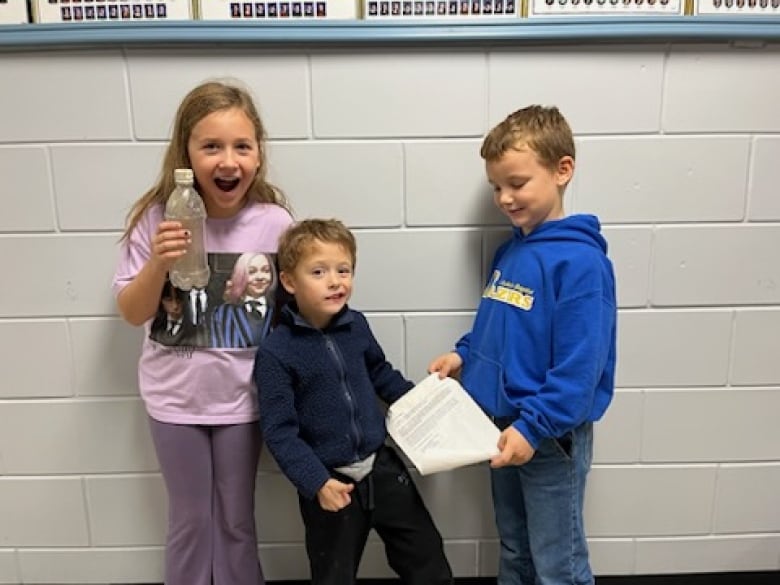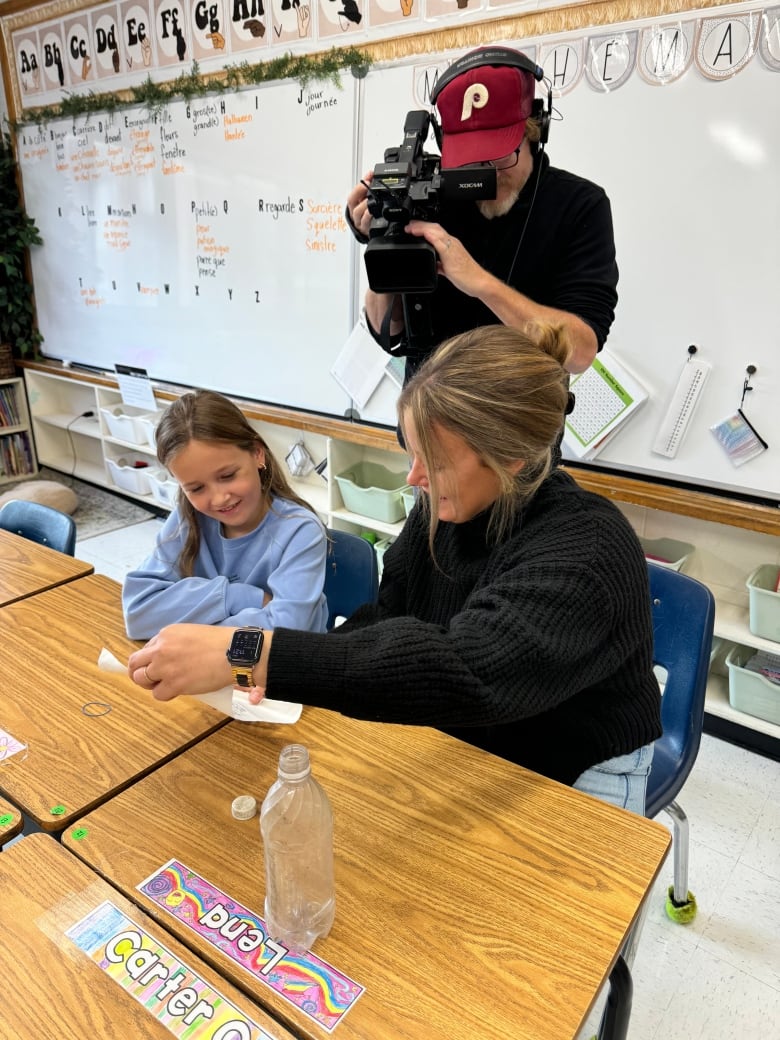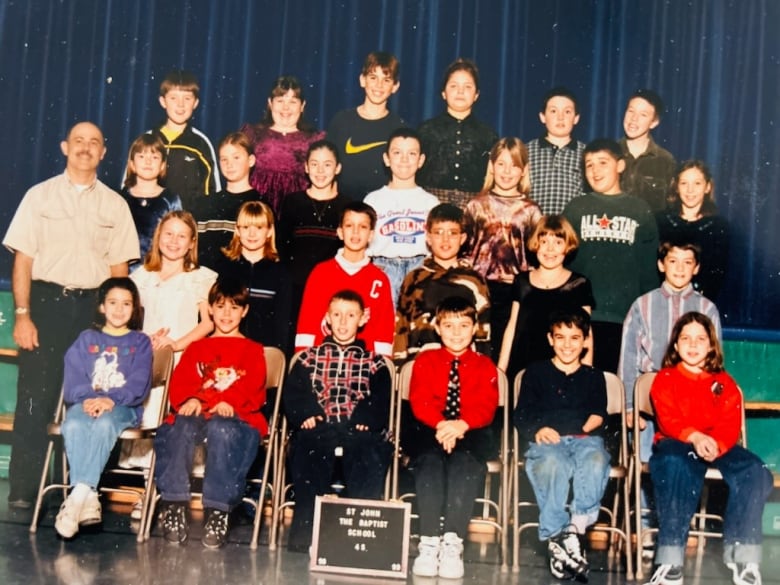
Windsor Morning6:44Message in a bottle found 26 years later at Belle River beach
Imagine finding out the elementary school project you completed — and purposely launched into a lake — was found by a student at the same school your daughter now attends, 26 years later.
That’s exactly what happened to Makenzie Van Eyk (nee Morris).
In 1998, she was in Grade 4 at St. John the Baptist Catholic Elementary School in Belle River, Ont., when her class was asked to write letters about water in the Great Lakes.
Thirty plastic messages in bottles were chucked into the water.
Fast forward to this fall, and a kindergarten student from the same school she went to found the bottle in virtually the same place where it originally went into the water on the shores of Lake St. Clair near Belle River’s pier and main beach in the southwestern Ontario town.
Van Eyk’s daughter, Scarlet, is in the same grade her mom was at the time.
Scarlet said that when her teacher read the note to her class, she waited until the end to say the name of the person who wrote it.
“My mouth completely dropped. And everyone was like, ‘Who’s that? Who’s that?’ And I was like, ‘My mother.'”
River Vandenberg found the bottle.
He came across it after hopping sandbar to sandbar.
“I thought it was a map to kill a grave digger or something,” said the kindergarten student.
His grandmother, Michele, said it was spotted by a jetty — a kind of breakwall between the beach and the river.
“There was no date on the letter, so I thought maybe [it was from] this year, maybe last year at most,” she said.
“We sent it to school. His teacher contacted us later that day and said that was from 1998. I was shocked.”

The letter writer, Makenzie Van Eyk, said she “absolutely” remembers writing the letter more than two decades ago — even sealing the bottle with wax.
“I think that process really stuck with me. This was also right when our school got a computer lab … one of the first things that I ever printed on paper and got to do something with.”
Van Eyk recalled it as a “pretty cool” thing to do.
“It was memorable to do something like that, throw something and think maybe someone will find it later.”
Here’s what the letter said:
This letter is coming from Makenzie Morris and I go to St John the Baptist School. I am in Grade 4 in Mr. St. Pierre’s class.
My letter is about water in the Great Lakes. We read a book called Paddle-to-the-Sea. It was a very good book.
The story was about a little boy who carved a paddle person out of wood and put it in the water and it travelled through all the Great Lakes. Do you know that all the Great Lakes spell HOMES? I thought that was pretty cool.

I learned at school that water has to go through water cycles to get all the bad stuff out, like germs and lots of other things. The water has been there since God created the world. Isn’t it funny to think that you might be drinking the same water Jesus did?
P.S. Please contact us at St. John the Baptist School. From Makenzie Morris.
Emotions unbottled 26 years later
Roland St. Pierre, a Grade 4 teacher at the time, came up with the message in a bottle assignment in 1998.
The now-retired teacher said it brings back a lot of good memories.
“It’s emotional,” he said.
St. Pierre said he got the idea when reading the book Paddle-to-the-Sea to the students.
“I had the kids do a writing assignment where they had to mention who they were and mention a few things of what they learned with the water study,” said St. Pierre.
“Once we had those done, we walked over to the pier at the end of Belle River and they we put these notices in bottles and they launched their bottles at the end of the river into Lake St Clair.”

A few other bottles were located within the first few months, according to St. Pierre’s recollection. But getting the call about this most recent discovery completely took him off guard.
“It was wild. I’ve got a lot of ties to this building. I taught 33 years here. It’s close to me. I had forgotten all about it, so it was a real shock.”
“For it to survive 26 years without breaking down, it’s kind of surprising.”
St. Pierre said the project also illustrates that all plastic that ends up in the water is “not a good thing” because it doesn’t break down.
According to Van Eyk, she had periodically reflected on the sort of “time capsule” over the years — wondering if it would ever be found.
“I definitely wasn’t thinking about it often, so I was very surprised.”
She said when the school contacted her, she was told a young boy found something down at the lake that we think you might want to see.